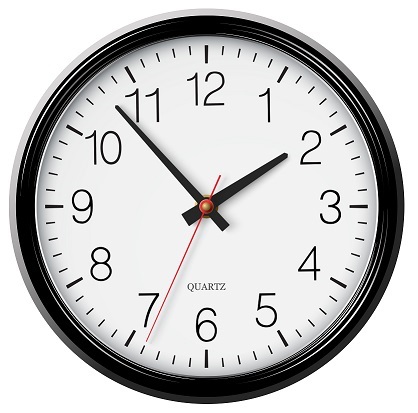 General practice is often organised around clinical ‘sessions’. But what exactly is a clinical session? One practice manager recently told Practice Index that he’s witnessed sessions comprising three hour clinics at 10 minutes per patient, four straight hours of 12 minute appointments, two and a half hour clinics with an hour of triage or even two hours of appointments plus an hour of emergencies. The list really does go on, so how can you work out what’s best for your practice?
General practice is often organised around clinical ‘sessions’. But what exactly is a clinical session? One practice manager recently told Practice Index that he’s witnessed sessions comprising three hour clinics at 10 minutes per patient, four straight hours of 12 minute appointments, two and a half hour clinics with an hour of triage or even two hours of appointments plus an hour of emergencies. The list really does go on, so how can you work out what’s best for your practice?
“This is the million dollar question,” one recently retired PM told us. “Technically it should be, in my view, 15 patients at 10 minutes per patient – that is two and a half hours. However, the typical day does not work like that. There are slow consulters (20 minutes per patient) and fast consulters (five minutes per patient). There are those doctors that will help each other when they get behind and there are those that will not. Some will take a break others won’t. It really is a case of each to his own and you can’t prescribe that it should be done this way or that way.”
Customer service
While most documentation and literature on the subject suggests that a session should last for four hours (four hours 10 minutes in some cases and never longer than this), the way that time is split seems less clear cut.
While some may argue that a session lasts a morning or an afternoon, it’s unlikely this is the case for most people. Practice Managers point to the fact that GPs like to be finished by 11am, although in recent years that has become more like 12 noon. Add into the mix that there are now fewer home visits and the use of telephone consultations, which may or may not have made a difference to sessions and it’s hard to make sweeping judgements on how sessions should be set out.
A PM told us: “GP practices are there to provide a service so it doesn’t pay to be too rigid. The working day is largely determined by the demand from the public for healthcare, and our carefully planned day is never quite as we anticipated. Demand fluctuates with the season, epidemics and health scares. A typical day is hard to define.”
Flexible approach
With the above in mind, the practice managers that we spoke to said it always pays to keep some ‘spare’ time within each session by tweaking appointments by one or two sessions, where necessary, to ensure the most pressing jobs are carried out. One practice manager advised that sessions and how they’re broken down should also be different for each day of the week: “Recently, having seen the model in action at a conference, we altered the number of appointments available each day, with more appointments available on Mondays. That’s made a huge difference to us and allowed us to be more flexible in terms of how we use session time later in the week.”
Appointment length
Of course, a key element of GP sessions is appointment length, which has become much more flexible since the abolition of the fixed 10 minute appointment system.
A spokeswoman for NHS England said: “GPs are professionals who know what is best for their patients. GP appointments are currently about 12 minutes long on average. GPs should have the flexibility to decide how long an appointment needs to be and how many patients they can see in one day, using their clinical judgement, on a case-by-case basis, based on the needs of their patients.”
All-in-all, before we even start to think about list sizes, numbers of GPs employed (and the inability to fill GP vacancies), GP sessions are flexible to say the least, with definite variations from practice to practice. It’s all about what works best for your surgery.
We would love to hear how you organise your sessions. Please let us know either by commenting below or take it to the forum.





April 2, 2015 at 11:44 am
Agree with the 4 hr 10 mts definition. The split which I have found acceptable to GPs is
a. 3 hrs clinical face to face – 18 x 10 minute appointments.
b. 1 hr 10 minutes for paper work – results/scripts/referrals etc
April 2, 2015 at 4:44 pm
Hi Lhahir,
Does your 18 appts include telephone calls? or are those done within the 1hr 10 remainder?
April 6, 2015 at 5:21 pm
This question is interesting from a locum insurance perspective.
Most practices ask us to insure their doctors for £250 a session but they rarely specify what a session is.
It can’t be right that ‘4 hour session’ practices and ‘2.5 hour session’ practices insure their doctors on the same basis and it seems to suggest there is some over- or under-insurance going on.
Maybe the over-insurance doesn’t matter too much as most policies nowadays leave it to the practice to decide what to do with the money and they don’t specify that it’s to be used to fund a locum – although it DOES mean they’ve bought and paid for more insurance than they actually need.
Under-insurance might be more of a problem if it means that, come the time the practice needs to claim, it’s only funded for a 3 hour session and it wants its locums to work 4 hours, meaning the practice needs to stump up for the shortfall.